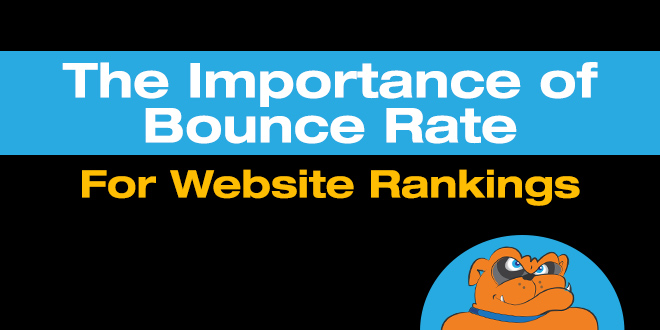
Bounce Rate – What is It?
Put succinctly bounce rate is the percentage of visitors that only view one page compared to the total number of visitors to your website. For example if during a given time frame (typically 30 days) you have a total of 5,000 visitors and 1,800 of them left the site without going to a second page you would have a bounce rate of 36% (1,800 / 5,000) which is actually very good.
A visitor is counted as a single page viewer when he or she clicks on the ” back button“, closes the window or tab, enters a new URL in the address bar or “abandons” the page (leaves the page open for greater than 30 minutes).
What Is The Importance Of Bounce Rate For My Website Ranking?
The answer is nobody knows for certain except Google. However, there are trends you can track on your analytics that typically (but not always) gives you an idea if one page viewers are hurting your ranking for a particular search phrase.
Google analytics will give you the bounce rate for a given page. Google WebMaster Tools will show where you rank for a given keyword phrase. Ideally each of your pages is targeted to a phrase so it’s a question of identifying pages with high bounce rate and then comparing the placement history of that phrase on WebMaster Tools.
Generally speaking (and this is very general) if you have a bounce rate of 60% or less you should not have any concerns. If it hits 80% you should worry and if you top 90% you have a problem…but not always.
If you have a purely informational page and a visitor arrives, finds exactly what they need and departs it seems unfair that the page detract from overall ranking. Apparently Google feels the same way otherwise dictionary sites where people visit to find a definition and then depart racking up a near 100% bounce rate would never appear. There has to be some mitigating factor in Google’s algorithm that takes time on page or some other metric into consideration for informational sites.
How To Turn One Page Visitors into Multi Page Visitors
It starts with great content and great visual appeal. If your content isn’t engaging and the page looks like it was published in 1999 there’s not much you can do. However, if you have a great page there are a couple of tactics you can use to encourage the visitor to visit deeper in the site.
Include an internal link in the form of a relevant anchor text to get visitors to click on another page. If you have a page on kitchen remodeling and you also have a gallery of cabinets you sell, include an anchor text in the remodeling page like “custom cabinetry” that leads to the gallery.
Put a call to action at the end of the page. “Read more about…” “Contact us” “Sign up for our report” all are good ways to move the viewer to another page within your website. Another simple step is to include “related posts” (just like we have here on our blog) so website visitors that enjoyed reading about a topic you wrote about on your blog can easily click through to a related, equally interesting blog on your website. The key is to ask your website visitor to take your desired action. Tell them what to do next, where to click and why! Truth is, people need to be guided to the next step, so provide that direction and watch your bounce rate improve. You can also consider exploring the offerings of a website ranking agency.
If you would like to see more of our Internet marketing tips go here.
Want to embed this infographic on your website?

